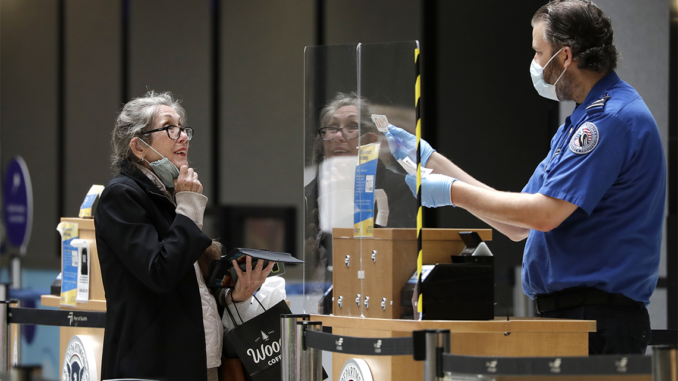
The Transportation Security Administration (TSA) announced the new procedures for airline passengers . These were done to minimize contact between TSA officers and travelers passing through security checks.
While there is still little air traffic – for example, 230,367 passengers passed through TSA checkpoints on May 20, compared to 2,472,123 passengers the same day in 2019 – the number is slowly increasing as authorities relax restrictions.
TSA expects to implement the new procedures at U.S. airports until mid-June.
The changes are:
1. To avoid contagion, TSA officials will no longer hold boarding passes. Passengers will scan their own printed or electronic boarding pass. They will also be asked to show it to the agent for inspection.
2. Food should be placed in a clear plastic bag and bag removed from luggage before placing on a tray for inspection. The TSA explains: “Food generally triggers an alarm during security screening; removing food from carry-on luggage reduces the chance that a TSA official will have to open the luggage to remove food and inspect it closely.”
3. Passengers are asked to pay more attention to prohibited items. Although passengers have long been asked not to carry liquids greater than 3.4 ounces, the TSA says it is now much more important to follow these guidelines, because officials will not have to “touch the contents of carry-on baggage “So often. If there are prohibited items, passengers may be asked to remove those items from their luggage and go through security after they are discarded. They will be allowed to carry up to 12 ounces of hand sanitizer by security check, but TSA requests that it be removed from carry-on baggage prior to inspection.
4. Passengers should maintain physical distance when possible . There may be markers on the ground that indicate the appropriate space between passengers in line, as well as other ways to help people maintain physical distance.
5. TSA officials at checkpoints will wear masks and gloves, and passengers are recommended to wear masks. TSA officials will also change gloves after each physical inspection of a passenger. Some officers will have the choice to wear eye protection or clear plastic face shields.
6. Travelers should place loose items in their carry-on luggage, rather than on trays. Keeping items like keys and phones out of trays “will reduce contact points during the inspection process,” says the TSA.
7. Passengers must arrive at the airport in sufficient time for inspection. The TSA announcement indicates that although the low volume has allowed passengers to arrive at departures a little before the scheduled time, with the new procedures and downsizing, it may take extra time for boarding procedures and passing security control areas.



Be the first to comment